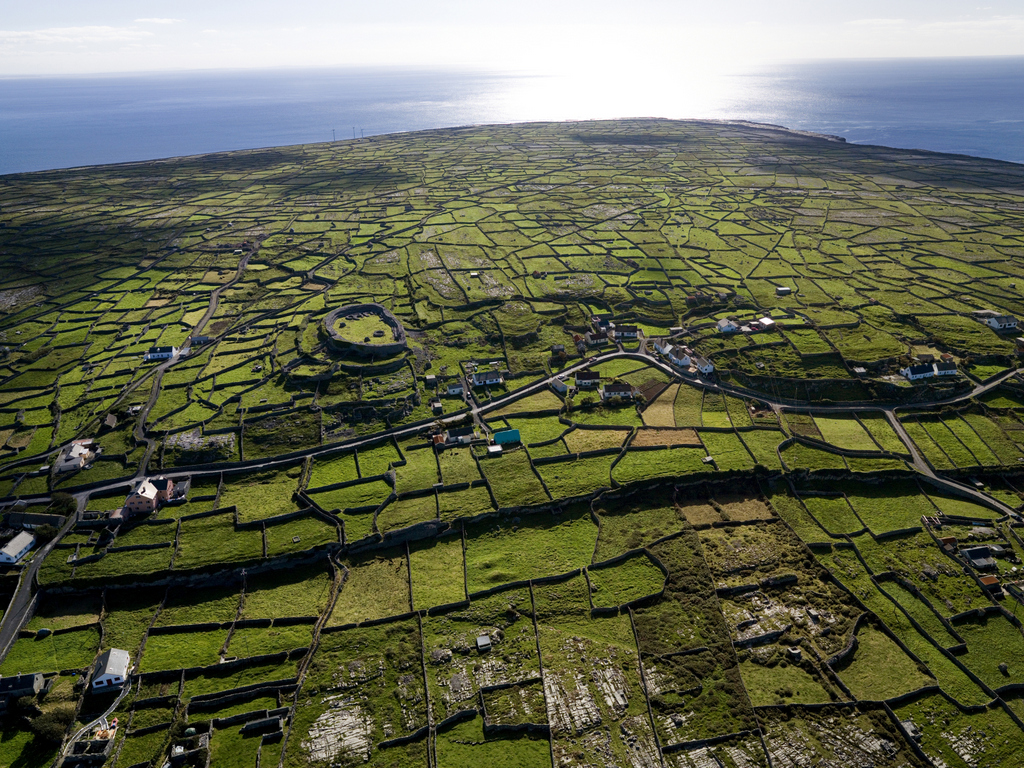Current trends in water quality

Ireland’s Environmental Health and Heritage illustration
Two-fifths of our river stretches nationwide have high nitrogen concentrations. Rivers, groundwater, and estuaries in the southeast are under particular pressure due to excessive nitrogen resulting from intensive agricultural activities on freely draining soils in these areas.
An Taisce – Advocating for Ireland’s Environmental Health and Heritage
An Taisce, established in 1948, stands as a crucial guardian of Ireland’s natural and built heritage. As a charitable organization committed to environmental preservation, An Taisce has been a vocal advocate for the protection of Ireland’s diverse ecosystems. The recent Water Quality in 2016-2021 report by the Environmental Protection Agency (EPA) has raised serious concerns about the deteriorating state of Irish water quality.
The EPA report, released today, unveils a stark reality: almost half of rivers and lakes, along with two-thirds of estuaries, exhibit suboptimal health and resilience. The findings sound a red alert, signaling a pressing need for immediate action to address the alarming decline in water quality.
Agricultural activity, inadequate wastewater treatment, forestry processes, and alterations to rivers and land drainage are identified as the primary drivers of this decline. The report underscores a disturbing trend of increasing pollution, with water quality moving in the wrong direction despite localized efforts.
Nutrient concentrations, particularly nitrogen and phosphorus, have reached concerning levels in numerous water bodies. Approximately one-third of rivers and lakes show elevated phosphorus concentrations, and 39% of river sites demonstrate a troubling increase in nitrogen levels. The prevalence of nitrogen pollution is notably high in the south and southeast, primarily attributed to intensive farming practices.
Estuaries in these regions are suffering from a 37% increase in nitrogen flow over the past decade, resulting in significant ecological degradation. An Taisce emphasizes that while individual and community efforts have yielded some improvements, the water quality crisis demands robust government intervention.
Dr. Elaine McGoff, Natural Environment Officer with An Taisce, points out the failures of existing water protection measures and the misalignment of governmental policies with the goal of improving water quality. She urges the government to take a different, honest approach in drafting a new River Basin Management Plan.
An Taisce has outlined recommendations in the latest River Basin Management Plan, urging the government to prioritize water quality protection over conflicting interests, such as agricultural expansion and forestry activities. The charity underscores the urgent need for transformative steps and emphasizes that individual actions alone cannot mitigate the crisis without strong government support.
An Taisce’s mission extends beyond water quality advocacy; it encompasses the broader goal of preserving and protecting Ireland’s natural and built heritage. As one of Ireland’s oldest and largest environmental organizations, An Taisce continues to serve as an independent and influential voice, advocating for policies that safeguard the environment for the common good.
Call for Ambitious Commitment: Government Urged to Set 30% Emissions Reduction Target for Agriculture
In a groundbreaking development, Ireland’s inaugural carbon budgets received approval from the Dáil in early April, establishing five-year limits on greenhouse gas (GHG) emissions for the periods 2021-2025 and 2026-2030. While specific allocations for each sector under these carbon budgets are pending finalization, a compelling appeal has arisen, urging the government to embrace a 30% emissions reduction target for the agriculture sector.
Sectoral Budgets and Equity
Equity stands as a fundamental principle in shaping Ireland’s carbon budgets, necessitating meaningful contributions from all sectors. However, achieving consensus on sectoral budgets has encountered a significant challenge, with agriculture at the center of ongoing debate. Despite being granted a notable concession—a maximum reduction of 30%, in contrast to other sectors facing a 60% reduction—calls persist for further leniency, proposing a reduced emissions reduction target of just 22% for agriculture.
Implications of Reduced Targets
An analysis warns that a 22% GHG reduction for agriculture could result in a substantial increase in energy-related emissions reductions, escalating from 60% to 68%. This shift would impose an additional financial burden of approximately €5000 per household by 2030, exacerbating existing challenges of energy poverty in Ireland.
Dr. Elaine McGoff, Natural Environment Officer for An Taisce, underscores the inequity and injustice of burdening society as a whole with additional financial strain to afford special treatment for the agriculture sector. She emphasizes the potential losers in the broader societal context, emphasizing the need for a fair distribution of the finite budget.
The Role of Agriculture in the Transition
Addressing the imperative of a ‘just transition,’ Dr. McGoff highlights the importance of substantial reductions in agricultural methane by 2030. She emphasizes the necessity for a careful and rapid implementation of this transition, offering clear supports and structures to assist farmers.
While the current focus is on agriculture, the broader transition demands attention to energy demand reduction, particularly in the transport sector. Dr. McGoff stresses that the transition will impact every individual, emphasizing the collective responsibility to meet Ireland’s GHG reduction obligations.
Recognizing Our Contribution and Responsibilities
The challenges to meet Ireland’s GHG reduction obligations are immense, but the call for a fair and equitable distribution of responsibilities resonates. Acknowledging Ireland’s contribution to global warming, there is an urgent plea for all sectors to play their part without exception. The impending transition will require commitment, collaboration, and a shared responsibility to address the pressing issue of climate change.
In response to the ongoing debates surrounding sectoral allocations in Ireland’s carbon budgets, experts and environmental advocates, including An Taisce, are urging the government to commit to a more ambitious target of a 30% reduction in greenhouse gas emissions for the agriculture sector. This call emphasizes the need for a fair and equitable distribution of responsibilities across all sectors to address the pressing issue of climate change.
